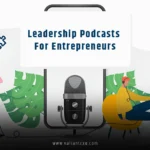Analysis of successful B2B marketing campaigns reveals a treasure trove of strategies that turn prospects into loyal clients. Ever wonder why some B2B campaigns soar while others fizzle out? It’s not magic—it’s a mix of creativity, precision, and a deep understanding of what makes businesses tick. In this article, we’ll dive into the nuts and bolts of what makes B2B marketing campaigns click, exploring real-world examples, actionable strategies, and the secret sauce behind campaigns that deliver results. Whether you’re a marketer looking to up your game or a business owner curious about what drives B2B success, this analysis of successful B2B marketing campaigns will light the way.
Why B2B Marketing Campaigns Matter
B2B marketing isn’t just about selling a product—it’s about building relationships that last. Unlike B2C, where emotions often drive purchases, B2B decisions are rooted in logic, ROI, and long-term value. So, what makes an analysis of successful B2B marketing campaigns so critical? It’s about understanding how to connect with decision-makers who hold the purse strings in businesses, from small startups to global enterprises.
Successful campaigns don’t just happen. They’re carefully crafted to address pain points, showcase value, and build trust. By studying these campaigns, we uncover patterns that can transform a mediocre marketing effort into a powerhouse that drives leads, conversions, and loyalty. Ready to see what sets the winners apart? Let’s break it down.
The Anatomy of a Winning B2B Campaign
Every great B2B campaign has a few key ingredients. Think of it like baking a cake: miss one element, and the whole thing flops. An analysis of successful B2B marketing campaigns shows they typically include:
- Clear Objectives: Whether it’s lead generation, brand awareness, or customer retention, top campaigns know their endgame.
- Targeted Messaging: They speak directly to the audience’s needs, not some vague, one-size-fits-all pitch.
- Data-Driven Insights: Successful campaigns lean on analytics to refine their approach and maximize impact.
- Multi-Channel Execution: From email to LinkedIn to webinars, they meet prospects where they are.
Let’s explore some real-world examples to see these elements in action.
Case Studies: Analysis of Successful B2B Marketing Campaigns
Nothing beats learning from the best. Here are three standout B2B campaigns that hit the mark, each showcasing unique strategies that you can adapt for your own efforts.
HubSpot’s Inbound Marketing Revolution
HubSpot, a leader in marketing software, didn’t just sell a product—they sold a movement. Their analysis of successful B2B marketing campaigns wouldn’t be complete without mentioning their “inbound marketing” philosophy. By creating valuable content like blogs, eBooks, and webinars, HubSpot positioned itself as a trusted advisor, not a pushy salesperson.
Their campaign focused on educating businesses about inbound marketing through free tools like their Website Grader and comprehensive guides. The result? A flood of leads who saw HubSpot as the go-to solution for their marketing needs. What’s the lesson here? Provide value first, and sales will follow. HubSpot’s approach shows that an analysis of successful B2B marketing campaigns often reveals the power of thought leadership.
Slack’s “Work Hard, Slack Easy” Campaign
Slack’s rise to dominance in team communication wasn’t accidental. Their B2B campaign targeted businesses frustrated with clunky email chains and inefficient workflows. By using relatable messaging like “Work Hard, Slack Easy,” they spoke directly to the pain points of their audience—busy professionals who needed a better way to collaborate.
Slack combined witty social media ads, customer testimonials, and a freemium model to draw users in. Their analysis of successful B2B marketing campaigns highlights the importance of simplicity and relatability. By making their platform feel like a natural extension of work life, Slack turned users into evangelists. Ever tried explaining a complex tool in one sentence? Slack nailed it.
Salesforce’s Dreamforce Extravaganza
Salesforce’s annual Dreamforce conference is more than an event—it’s a marketing juggernaut. This analysis of successful B2B marketing campaigns wouldn’t be complete without it. Dreamforce blends in-person networking, thought leadership, and product showcases to create a must-attend experience for B2B buyers.
By bringing together industry leaders, offering hands-on demos, and creating a sense of community, Salesforce turns prospects into loyal customers. Their secret? They make buyers feel like they’re part of something bigger. An analysis of successful B2B marketing campaigns like Dreamforce shows that creating memorable experiences can be just as powerful as a killer ad.
Key Strategies Behind Successful B2B Campaigns
So, what can we learn from these examples? An analysis of successful B2B marketing campaigns reveals a few universal strategies that set the winners apart. Let’s break them down.
Know Your Audience Like Your Best Friend
B2B buyers aren’t faceless corporations—they’re people with goals, frustrations, and budgets. Successful campaigns dig deep into audience research to understand their needs. Are they looking to cut costs? Streamline processes? Impress their boss? By tailoring messaging to these pain points, campaigns hit the bullseye.
For example, when IBM launched its “Smarter Planet” campaign, they didn’t just talk about tech—they framed it as a solution to global business challenges. This resonated with C-suite executives who needed big-picture solutions. An analysis of successful B2B marketing campaigns shows that knowing your audience’s deepest desires is half the battle.
Content Is King, Context Is Queen
Content marketing is the backbone of many B2B campaigns. But it’s not enough to churn out blog posts or whitepapers. Successful campaigns deliver the right content at the right time. Think of it like serving a gourmet meal: timing and presentation matter as much as the ingredients.
Take Adobe’s Content Marketing Strategy, for instance. Their analysis of successful B2B marketing campaigns shows they used targeted whitepapers and case studies to guide prospects through the buyer’s journey. By offering insights at every stage—from awareness to decision-making—they built trust and credibility. Want to win at B2B? Make your content a trusted guide, not a sales pitch.
Leverage Data to Stay Ahead
Data is the secret weapon of modern B2B marketing. An analysis of successful B2B marketing campaigns reveals that top performers use analytics to track everything from email open rates to website conversions. This lets them tweak campaigns in real time for maximum impact.
For example, Marketo’s account-based marketing (ABM) campaigns use data to target high-value accounts with personalized content. By analyzing which messages resonate, they optimize their approach on the fly. The takeaway? If you’re not using data to guide your campaigns, you’re flying blind.
Multi-Channel Mastery
B2B buyers don’t live in a single channel—they’re on LinkedIn, reading emails, attending webinars, and more. Successful campaigns meet them wherever they are. An analysis of successful B2B marketing campaigns shows that multi-channel strategies amplify reach and engagement.
Take Cisco’s “The Network Effect” campaign. They used a mix of video content, social media, and live events to showcase their networking solutions. By creating a cohesive experience across channels, they kept prospects engaged at every touchpoint. Want to make your campaign unstoppable? Be everywhere your audience is.
Common Pitfalls to Avoid in B2B Marketing
Even the best-laid plans can go awry. An analysis of successful B2B marketing campaigns also means learning from mistakes. Here are some pitfalls to dodge:
Ignoring the Buyer’s Journey
B2B sales cycles are long, often involving multiple stakeholders. If your campaign only focuses on the final decision-maker, you’re missing the mark. Successful campaigns address every stage of the buyer’s journey—awareness, consideration, and decision. Map out your audience’s path and tailor content to each step.
Overcomplicating the Message
B2B doesn’t mean boring, but it also doesn’t mean overly complex. If your campaign requires a PhD to understand, you’ve lost your audience. Keep messaging clear and concise, like Slack’s “Work Hard, Slack Easy.” An analysis of successful B2B marketing campaigns shows that simplicity wins.
Neglecting Follow-Up
A great campaign generates leads, but what happens next? Too many B2B marketers drop the ball after the initial outreach. Successful campaigns include robust follow-up strategies, like personalized emails or retargeting ads, to keep prospects engaged.
How to Create Your Own Winning B2B Campaign
Ready to put this analysis of successful B2B marketing campaigns to work? Here’s a step-by-step guide to crafting a campaign that delivers:
- Define Your Goals: Are you after leads, brand awareness, or customer loyalty? Clear goals keep your campaign focused.
- Research Your Audience: Use surveys, interviews, and analytics to understand your buyers’ needs and pain points.
- Craft Compelling Content: Create blogs, videos, or case studies that address those needs and showcase your expertise.
- Choose the Right Channels: LinkedIn for professionals, email for personalized outreach, or webinars for deep dives—pick what works.
- Measure and Optimize: Use tools like Google Analytics or HubSpot to track performance and refine your approach.
For more insights on building effective campaigns, check out HubSpot’s guide to B2B marketing, Salesforce’s marketing resources, or Marketo’s ABM strategies.
Conclusion: Unlocking B2B Success
An analysis of successful B2B marketing campaigns shows that the best ones blend creativity, data, and audience insight to deliver results. From HubSpot’s thought leadership to Slack’s relatable messaging and Salesforce’s experiential marketing, these campaigns prove that B2B doesn’t have to be boring. By understanding your audience, delivering value, and leveraging multiple channels, you can create campaigns that don’t just generate leads—they build lasting relationships. So, what’s stopping you? Take these lessons, craft your own campaign, and watch your B2B marketing soar.
FAQs
What makes an analysis of successful B2B marketing campaigns different from B2C?
B2B campaigns focus on logical decision-making, long sales cycles, and multiple stakeholders, while B2C often leans on emotional triggers and quick purchases. An analysis of successful B2B marketing campaigns highlights strategies like thought leadership and personalized content to address these differences.
How can small businesses benefit from an analysis of successful B2B marketing campaigns?
Small businesses can learn to target niche audiences, use cost-effective channels like LinkedIn, and create valuable content to compete with bigger players. Studying these campaigns helps them maximize ROI with limited resources.
What role does content play in successful B2B campaigns?
Content is the heart of B2B marketing, building trust and guiding buyers through the sales funnel. An analysis of successful B2B marketing campaigns shows that blogs, whitepapers, and case studies are key to establishing authority and driving engagement.
How important is data in an analysis of successful B2B marketing campaigns?
Data is critical. It helps marketers track performance, understand audience behavior, and optimize campaigns in real time. Successful campaigns use tools like Google Analytics to stay agile and effective.
Can an analysis of successful B2B marketing campaigns help with lead generation?
Absolutely! By studying what works—targeted messaging, multi-channel strategies, and strong follow-ups—businesses can create campaigns that attract and convert high-quality leads.
For More Updates!!!valiantcxo.com


